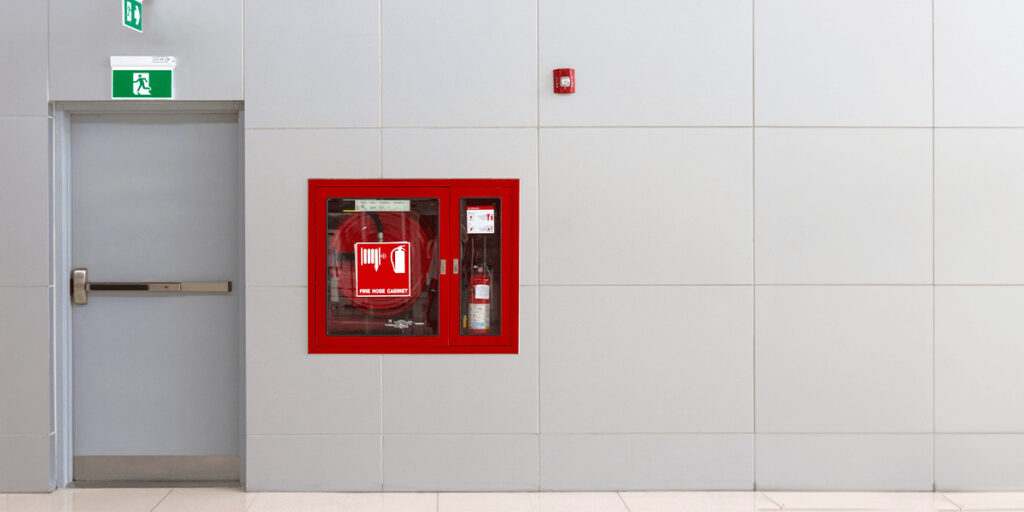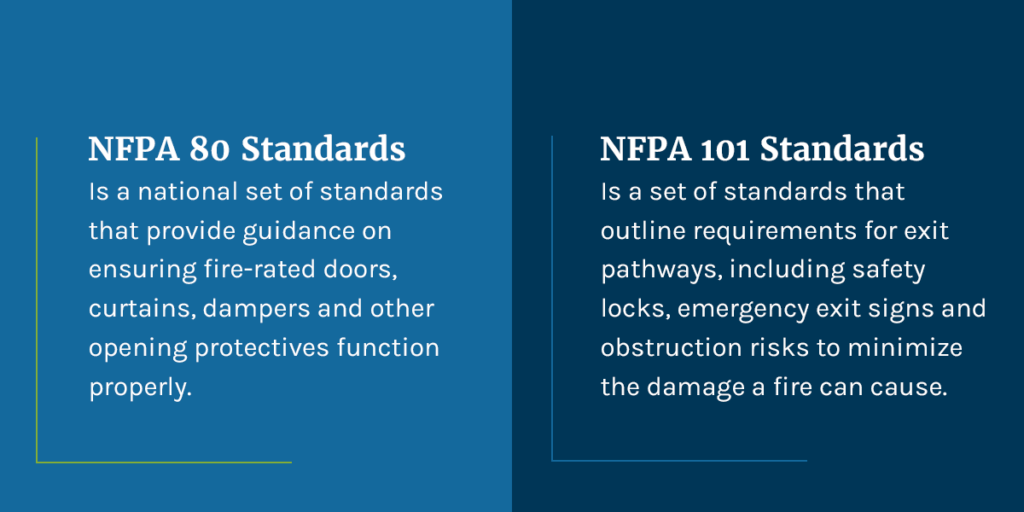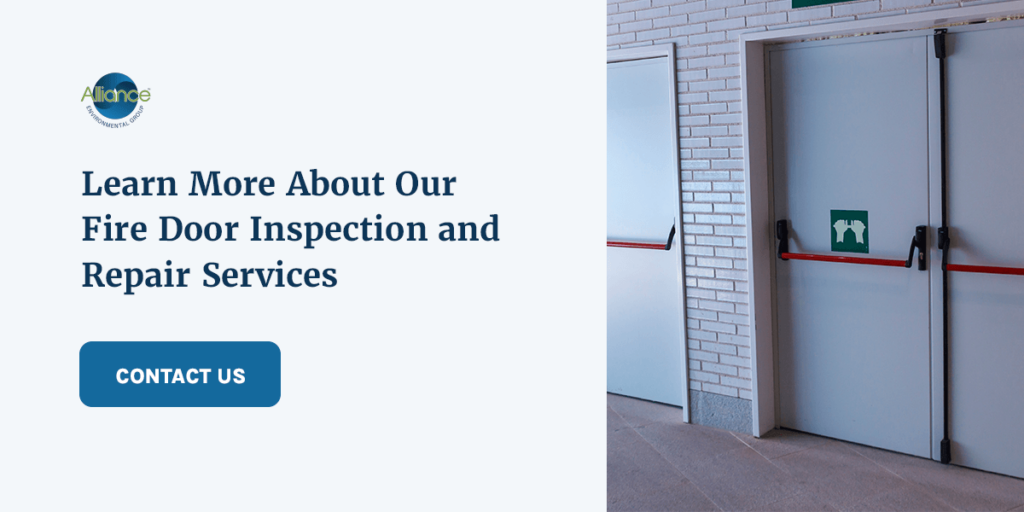- Careers
-
Search
- Call Us: 877-899-9867

According to the U.S. Fire Administration, fire death rates have increased steadily over the past decade to a sobering 13 deaths per million population in 2021. Regardless of what started these fires, such a loss of life is tragic — and, in many cases, preventable. From visible emergency exit signage to the number of extinguishers your building contains, installing the proper safety measures is critical for protecting people and property in an emergency.
There are two essential fire-rated door regulations from the National Fire Protect Agency (NFPA) that organizations should pay attention to — NFPA 80 and NFPA 101. While compliance with both fire door safety standards is voluntary at a national level, it’s often mandatory at the state or local level.
Knowing what each standard requires as well as the key differences between the two can help you improve your building’s overall safety.
The NFPA 80 Standard for Fire Doors and Other Opening Protectives is a national set of standards that provide guidance on ensuring fire-rated doors, curtains, dampers and other opening protectives function properly. Regular inspection by a certified professional is a key part of these regulations.
Although NFPA 80 compliance is not required at a national level, many states and local governments have incorporated the standard into operational safety and building codes. You can learn more about your region’s requirements by checking the appropriate agency’s website.
The NFPA 80 requirements have many different moving parts, so knowing what to prioritize can help you streamline compliance management in your organization. Some of the most important components of the NFPA 80 standard include:
Working with an experienced professional can help you navigate the more specific details of this standard for your facility and industry.

Also known as the Life Safety Code, NFPA 101 is unique because it is the only NFPA document that addresses both new and existing buildings. It’s essentially a set of standards that outline requirements for exit pathways, including safety locks, emergency exit signs and obstruction risks to minimize the damage a fire can cause.
NFPA 101 also includes requirements for inspecting safety devices like fire extinguishers, locks, sprinklers, alarms and emergency lighting — which makes it a more extensive standard than NFPA 80.
A means of egress is a designated emergency exit pathway that provides occupants with a direct route outside the building. NFPA 101 states that all three parts of an egress route must have a visible exit sign and be completely clear of obstacles. Those three sections include:
This component of the standard goes hand in hand with emergency lighting, as all means of egress should have sufficient lighting even when your main lights go out.
Emergency lighting and signage comprise another critical component of the NFPA 101 standards. All emergency exit pathways should have adequate lighting, with clearly visible “EXIT” signs marking their location. Some examples of emergency access paths include:
According to the standard handbook, emergency lighting should last for at least 90 minutes after your normal operating lights fail to give occupants enough time to evacuate.
The exit sign can take several forms, but the typical sign has either a white or black background with bright red letters. More specific regulations on exit signs, such as letter size, mounting height and sign location, vary depending on several factors — check your region’s building code to find the requirements that apply to your facility.
NFPA 101 also outlines rules and procedures for inspecting fire protection equipment, such as:
In general, it’s important to ensure all your devices are located where they are easy to access if a fire does break out. Make sure no obstructions are blocking them, and check their expiration dates frequently to pass inspection.

Do you need help achieving compliance with fire door regulations in your facility? Finding the right inspectors to do the job is essential. At Alliance Environmental, we work with organizations across a wide range of industries to equip them to better protect their people and property from fire damage.
We are committed to helping our customers achieve NFPA 80 compliance by providing professional inspection, repair and replacement services for fire doors and associated devices like dampers and alarms. Contact us today for more information, or fill out our online form to request a quote.